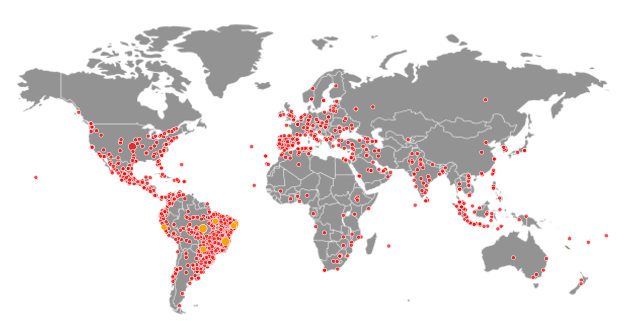EFEITOS DE INTERVENÇÕES PROPRIOCEPTIVAS NAS ENTORSES DE TORNOZELO EM ATLETAS: COM ÊNFASE NA REINCIDÊNCIA, INSTABILIDADE CRÔNICA E MELHOR PROGNÓSTICO
DOI:
https://doi.org/10.61164/5brv8w74Palavras-chave:
propriocepção, entorses, tornozelo, atletaResumo
Tendo em vista a importância e a frequência das lesões por entorse no meio esportivo, o principal objetivo do presente estudo é investigar os efeitos das intervenções proprioceptivas na prevenção de entorses de tornozelo em atletas, com foco na sua eficácia em reduzir a reincidência da lesão e na promoção da estabilidade articular. Para isso, foi realizada uma revisão sistemática da literatura, com base em artigos científicos publicados entre os anos de 2015 e 2025 nas bases de dados PubMed, SciELO e BVSALUD. Os estudos selecionados incluíram diferentes protocolos de treinamento proprioceptivo, como exercícios em superfícies instáveis, facilitação neuromuscular proprioceptiva (FNP) e outras abordagens com foco no equilíbrio. Os resultados apontam para a eficácia das intervenções na melhora do equilíbrio, da propriocepção e da função, além da redução significativa da taxa de reincidência de entorses e do tempo de retorno à prática esportiva. Conclui-se que a aplicação dos protocolos proprioceptivos se apresenta como uma estratégia eficaz e segura, principalmente quando combinada com outra abordagem terapêutica, sendo recomendada na reabilitação e na prevenção de entorses de tornozelo em atletas.
Downloads
Referências
ALAHMARI, Khalid A. et al. Effectiveness of Low-Frequency Stimulation in Proprioceptive Neuromuscular Facilitation Techniques for Post Ankle Sprain Balance and Proprioception in Adults: A Randomized Controlled Trial. BioMed Research International, v. 2020, p. 1–13, 2020. DOI: 10.1155/2020/9012930. DOI: https://doi.org/10.1155/2020/9012930
ALGHADIR, Ahmad H. et al. Effect of chronic ankle sprain on pain, range of motion, proprioception, and balance among athletes. International Journal of Environmental Research and Public Health, [s.l.], [s.n.], [s.d.].
GOOSSENS, Nina et al. Differences in brain processing of proprioception related to postural control in patients with recurrent non-specific low back pain and healthy controls. NeuroImage: Clinical, v. 23, p. 101881, 2019. DOI: 10.1016/j.nicl.2019.101881. DOI: https://doi.org/10.1016/j.nicl.2019.101881
HALABCHI, Farzin; HASSABI, Mohammad. Acute ankle sprain in athletes: Clinical aspects and algorithmic approach. World Journal of Orthopedics, [s.l.], [s.n.], [s.d.].
JU, Sung-Bum; PARK, Gi Duck. Effects of the application of ankle functional rehabilitation exercise on the ankle joint functional movement screen and isokinetic muscular function in patients with chronic ankle sprain. Journal of Physical Therapy Science, v. 29, p. 278–281, 2017. DOI: https://doi.org/10.1589/jpts.29.278
KAMINSKI, Thomas W.; NEEDLE, Alan R.; DELAHUNT, Eamonn. Prevention of lateral ankle sprains. Journal of Athletic Training, v. 54, n. 6, p. 650–661, 2019. DOI: 10.4085/1062-6050-487-17. DOI: https://doi.org/10.4085/1062-6050-487-17
KOBAYASHI, Takumi; KOSHINO, Yuta. Efficacy of conservative intervention for kinesiophobia in individuals with a history of ankle sprain: A systematic review. PM&R, v. 1, p. 1–8, 2025. DOI: 10.1002/pmrj.13328. DOI: https://doi.org/10.1002/pmrj.13328
KOBAYASHI, Takumi; TANAKA, Masashi; SHIDA, Masahiro. Intrinsic risk factors of lateral ankle sprain: A systematic review and meta-analysis. Sports Health, v. 8, n. 2, p. 190–193, 2016. DOI: 10.1177/1941738115623775. DOI: https://doi.org/10.1177/1941738115623775
RIVA, Dario et al. Proprioceptive training and injury prevention in a professional men’s basketball team: A six-year prospective study. Journal of Strength and Conditioning Research, v. 30, n. 2, p. 461–475, 2016. DOI: https://doi.org/10.1519/JSC.0000000000001097
RIVERA, Matthew J. et al. Proprioceptive training for the prevention of ankle sprains: an evidence-based review. Journal of Athletic Training, v. 52, n. 11, p. 1065–1067, 2017. DOI: 10.4085/1062-6050-52.11.16. DOI: https://doi.org/10.4085/1062-6050-52.11.16
SCHIFTAN, G. S.; ROSS, L. A.; HAHNE, A. J. The effectiveness of proprioceptive training in preventing ankle sprains in sporting populations: a systematic review and meta-analysis. Journal of Science and Medicine in Sport, v. 18, n. 3, p. 238–244, 2015. DOI: 10.1016/j.jsams.2014.06.005. DOI: https://doi.org/10.1016/j.jsams.2014.04.005
SILVA, Raionara Figueiredo da et al. Cinesioterapia aplicada a entorse de tornozelo: estudo de qualidade metodológica. Fisioterapia Brasil, v. 21, n. 2, p. 215–227, 2020. DOI: 10.33233/fb.v21i2.3915. DOI: https://doi.org/10.33233/fb.v21i2.3915
VUURBERG, Gwendolyn et al. Diagnosis, treatment and prevention of ankle sprains: update of an evidence-based clinical guideline. British Journal of Sports Medicine, v. 52, p. 956, 2018. DOI: 10.1136/bjsports-2017-098106 DOI: https://doi.org/10.1136/bjsports-2017-098106
Downloads
Publicado
Edição
Seção
Licença
Copyright (c) 2025 Revista Multidisciplinar do Nordeste Mineiro

Este trabalho está licenciado sob uma licença Creative Commons Attribution-NonCommercial-ShareAlike 4.0 International License.
Autores que publicam nesta revista concordam com os seguintes termos:
- Autores mantém os direitos autorais e concedem à revista o direito de primeira publicação, com o trabalho simultaneamente licenciado sob a Licença Creative Commons Attribution que permite o compartilhamento do trabalho com reconhecimento da autoria e publicação inicial nesta revista;
- Autores têm autorização para assumir contratos adicionais separadamente, para distribuição não-exclusiva da versão do trabalho publicada nesta revista (ex.: publicar em repositório institucional ou como capítulo de livro), com reconhecimento de autoria e publicação inicial nesta revista, desde que adpatado ao template do repositório em questão;
- Autores têm permissão e são estimulados a publicar e distribuir seu trabalho online (ex.: em repositórios institucionais ou na sua página pessoal) a qualquer ponto antes ou durante o processo editorial, já que isso pode gerar alterações produtivas, bem como aumentar o impacto e a citação do trabalho publicado (Veja O Efeito do Acesso Livre).
- Os autores são responsáveis por inserir corretamente seus dados, incluindo nome, palavras-chave, resumos e demais informações, definindo assim a forma como desejam ser citados. Dessa forma, o corpo editorial da revista não se responsabiliza por eventuais erros ou inconsistências nesses registros.
POLÍTICA DE PRIVACIDADE
Os nomes e endereços informados nesta revista serão usados exclusivamente para os serviços prestados por esta publicação, não sendo disponibilizados para outras finalidades ou a terceiros.
Obs: todo o conteúdo do trabalho é de responsabilidade do autor e orientador.







